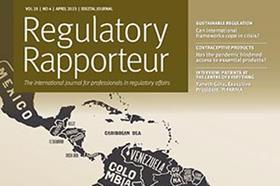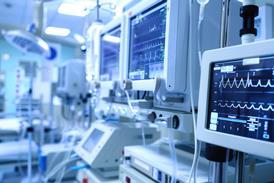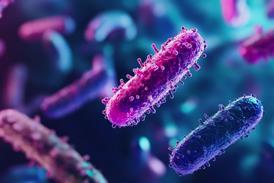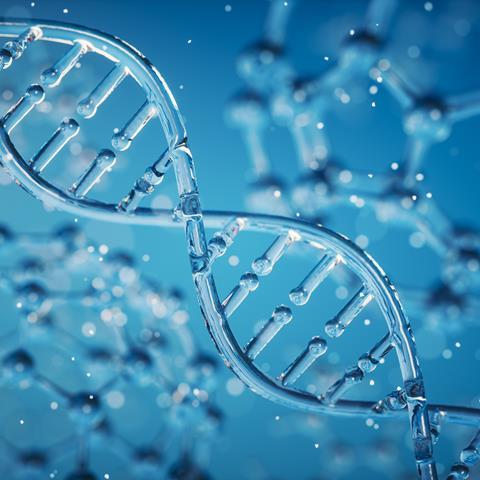Advanced therapy medicinal products (ATMPs) have had recent advances in development and have already been subject to regulation in some markets. This article summarises the regulatory framework for ATMPs in some of the markets where these requirements are in place: Argentina, Brazil, Europe, and the US. The categories analysed were regulatory classification, product categories, packaging, product insert, good manufacturing practice (GMP), pharmacovigilance, environmental safety evaluation, clinical trial application (CTA) and investigational new drug (IND) application, post-approval changes, chemistry, manufacturing and controls (CMC)/quality, importation process, prioritisation pathways, transport validation, local release testing and traceability.
Licence notice
Copyright © 2015-2023 The Organisation for Professionals in Regulatory Affairs Ltd. T/A Regulatory Rapporteur − All Rights Reserved. This work is licensed to Sue Corbett for the purposes of academic and personal reasonable use only.
Notwithstanding this licence, no part of materials published in Regulatory Rapporteur may be reproduced without the express written permission of the publisher.
As a general rule, permission should be sought from the rights holder to reproduce any substantial part of a copyrighted work. This includes any text, illustrations, charts, tables, photographs, or other material from previously published sources.
To obtain permission(s) to re-use content published in Regulatory Rapporteur please email publications@topra.org.
To join TOPRA please click here.

Regulatory Rapporteur
April 2023 | Volume 20 | No.4
Introduction
Advanced therapy medicinal products (ATMPs) are new therapeutic products of regenerative medicine that use gene therapy, cell therapy, and tissue engineering to treat varied types of degenerative diseases or injuries, such as skin burns, Alzheimer’s, cancer, or muscular dystrophy. In some markets, including Argentina, Brazil, the European Union (EU), and the US, regulatory requirements for these products are already in place. This paper aims to provide an overview of the regulatory framework for ATMPs in these markets, from product manufacturing, clinical trials and regulatory registration to lifecycle management.
Because advanced therapies are a relatively new and rapidly developing market, further understanding is needed on the nature and risks of products, specific requirements and long-term exposure, among others. Thus, engaging with the relevant agencies is highly recommended to understand the regulatory expectations prior to clinical trial design and/or marketing authorisation application (MAA). This paper’s educational purpose is to provide insight into regulatory maturity and understanding across several countries and regions, including world reference agencies such as the US FDA and European Union’s EMA.
Categories
1. Regulatory classification
Advanced therapies have a complex regulatory environment in the region, partly because countries define different classifications based on product nature. Most health authorities have classified advanced therapy products as biological medicines, including the EMA[1], and Argentina’s Administración Nacional de Medicamentos, Alimentos y Tecnología Médica (ANMAT) [2],[3] The US traditionally considered them biologics or combination products until 2016 when they were redefined as regenerative medicine therapy.[4] Brazil’s Agência Nacional de Vigilância Sanitária (ANVISA) included these products in a new special classification.[5]
2. Categories
Some countries, such as Brazil and the US, further divide advanced therapies into categories based on risk class or nature of the product. In Brazil, ANVISA5 defined two groups of advanced therapies based on the extent of manipulation and function. The FDA[6] defined three separate tiers: fertility related, middle risk and others. Argentina and the EU have no specific categorisation for advanced therapies.
3. Packaging requirements
Packaging requirements for advanced therapy products depend on the product’s nature, use, and characteristics. EU guideline[1] suggests considering traceability for autologous use products. Brazil, Argentina, and the US lack specific regulations for advanced therapy packaging. However, these countries have labeling requirements that apply to all product types.
4. Product insert requirements
Labeling requirements, such as minimum warnings and essential information to ensure safe use, demand further experience with this class of products. The EMA currently allows companies to validate with them prior to registration, and Argentina should follow. The US and Brazil lack guidance specific to advanced therapies, which should be expected in the near future considering they may need more familiarity with the products.
Rules for information of product origin for cell or tissue-based products are in place in the EU.[7]
5. GMP requirements
All countries in scope have good manufacturing practice (GMP) requirements for drug substance, drug product manufacturing and associated sites. Argentina has ANMAT 179/18[4] and ANMAT 7075/11[3] for biologics. Brazil has RDC 214/18[8] for human cells for therapeutic use and RDC 508/2021[9] for general manufacturing steps. EMA has guidelines on GMP for ATMPs.[10] The US regulate ATMP manufacturing under the current GMP (cGMP) regulation in 21 CFR Part 211.[11]
6. Pharmacovigilance requirements
All countries in scope have pharmacovigilance (PV) regulations, but only the US and EU have specific rules for ATMPs. EU’s Procedural Advice on the Evaluation of Advanced Therapy Medicinal Products[1] outlines rules for registration, follow-up monitoring, and risk management plans. The US has the Guidance for Industry - Long Term Follow-up After Administration of Human Gene Therapy Products[12], which recommends five to 15 years of follow-up for clinical trials, depending on product type and the nature of exposure.
Brazil’s ANVISA recently published RDC 406/2020[13] does not have specific items for ATMPs and Argentina has no specific regulation, so regulation for synthetics/biologics should apply.
7. Environmental safety evaluation (GMOs)
7.1. EMA
The EMA’s updated guidance[14] on the evaluation of ATMPs outlines the roles of its scientific committees, including the Committee on Advanced Therapies (CAT), Committee for Medicinal Products for Human Use (CHMP), and Pharmacovigilance Risk Assessment Committee (PRAC). The CAT is responsible for evaluating the quality, safety, and efficacy of ATMPs subject to marketing authorisation application (MAA), and its draft opinion is sent to the CHMP for final approval. The CHMP’s recommendation is then adopted by the European Commission. When a medicinal product contains GMOs, comments from national competent authorities are taken into consideration.[7]
7.2. US
Besides the FDA, the US Environmental Protection Agency (EPA) and the US Department of Agriculture (USDA) regulate GMOs to ensure safety for humans, plants, animals, and the environment.[14] The Agencies work together under the Coordinated Framework for the Regulation of Biotechnology.[15] Sponsors are encouraged to contact the Office of Therapeutic Products (OTP) [16]early in the product development [17],[18] for assessment, including manufacturing and clinical trial design issues. However, there are no specific recommendations for evaluating environmental concerns of GMOs for ATMPs.
7.3. ANVISA
Brazil’s Resolution RDC 505/2021[5],19] outlines minimum requirements for advanced therapy product registration and includes the definition of the National Technical Commission on Biosafety (CTNBio). Brazilian law prohibits marketing of advanced therapy products involving GMOs without CTNBio approval.[20] CTNBio evaluation can be done prior to or in parallel with the marketing authorisation evaluation performed by the Office of Blood, Tissues, Cells and Organs GTSCO-ANVISA, and marketing of the approved drug can only happen after approval from both agencies. CNTBio evaluates post-marketing authorisation monitoring activities and routine pharmacovigilance activities may be accepted, as per Luxturna® (Novartis) approval in Brazil in 2020.[13]
7.4. ANMAT
Regulations 179/28[2] and 7075/11[3] define advanced therapies as biologic drugs, but do not specify environmental safety evaluation or a responsible committee. Environmental assessment is only mandated for the agricultural sector per Resolution 763/2011.[21]
8. Clinical trial design
Preclinical and clinical trial development for advanced therapies pose significant challenges due to the diversity of products that can be developed. Regulatory agencies are still learning from the incoming products and defining requirements, but the US and EU have established guidelines.
The EU has specific and comprehensive guidelines[22] for designing and conducting trials for ATMPs. The US also has a comprehensive framework, spanning the preclinical[23] and clinical[24] phases, gene therapy for rare diseases[25], and trials for gene therapy and cellular[15],[26]
Brazil[5] describes responsibilities but doesn’t specify how to design and conduct the trials, so companies should rely on good clinical practice (GCP) guidelines. Argentina follows EU guidelines.
9. Post-approval
Rules for the initial registration of ATMPs are still under development, so it is expected that post-approval rules remain a topic for further discussion. Currently, only the EU has specific guidelines.[27] In Argentina, Brazil and the US, general post-approval requirements apply to ATMPs.
10. Quality
10.1. EMA
The EMA updated the guideline on quality for genetically-modified cells in medicinal products[28], which provides guidance on development and evaluation for genetic modification and the genetically modified product. The quality section has been updated with an emphasis on starting materials, comparability, and validation. The guideline addresses the risks posed by genetically-modified cells to patients and third parties, with reference to a risk-based approach proposed by the Directive 2001/83/EC.[7] The risk-based approach is optional but, when used, the guideline must be followed. Table 1 replicates an example of this approach from the guideline.
Table 1: AAV vector expressing the human fictionase enzyme (FE) administered for the treatment of FE deficiency disease [29]
Stability is referenced as an open concept[30], since due to its complex nature, requirements should be defined on a case-by-case basis, for both the cellular and non-cellular components.
10.2. FDA
The FDA released guidance documents for CMC of human gene therapy[31] and somatic cell therapy.[32]The gene therapy guide aims to ensure product safety, identity, quality, purity, and strength (including potency) of the investigational drug and follows the common technical document (CTD) structure for the architecture of the application, including a distinction between drug substance (DS) and drug product (DP). Applicants should explain the definition of DS/DP for the product and provide a separate DS section for vectors.
The somatic cell therapy guidance highlights manufacturing challenges, such as variability in components, adventitious contamination, the need of aseptic processing, and the inability to sterilise living cells. Distribution is also a challenge, since administration may happen before test results. The format of the dossier is not specified, but sponsors are encouraged to use the format in Appendix A for an efficient review by the FDA.
No specific CMC guideline for tissue-engineered therapy medicinal products was identified.
10.3. ANVISA
RDC n.338/2020[5] outlines minimum requirements for MAAs of ATMPs in Brazil based on efficacy, safety, and quality. Chapter III applies to all ATMPs and requires summaries on product characteristics, mechanism of action, production information, non-clinical and clinical aspects of the product.
Article 23 of Chapter V outlines detailed requirements for Class II ATMPs. This includes requirements for starting materials, raw materials, excipients, active components, manufacturing steps, and stability studies. However, there are no specific details provided for stability studies, such as the number of batches or study design.
11. Importation process guidelines
Product nature, storage, presentation, and packaging greatly affect import processes. The Guidelines on GMP for ATMPs C (2017) 7694 [10] state that batch controls are exempted for ATMP imports to the EU from third countries.
Argentina, Brazil, and the US lack regulations for importation.
12. Expedited regulatory pathways
Ways to expedite a medicine´s review is an important and always current topic as the goal is not only to bring news therapies to patients, but to do it the fastest possible. It is important to note that the Health Authorities are addressing this point and providing ways to expedite the review for ATMPs as detailed in the following sections. Obviously, the nature of the product and the target disease/condition will dictate the likelihood of applying for an expedited pathway.
12.1. FDA expedited pathways
Several pathways can accelerate drug availability in the US if certain criteria are met. During development, fast track expedites the development of drugs for serious and unmet medical needs. Breakthrough therapy may be requested for developments with substantial improvements over standard treatments. Both can lead to accelerated approval and priority review.[33]
Accelerated approval, also during development, may be granted for serious conditions, with meaningful advantage over other therapies and effect on a surrogate endpoint. At the time of original submission, priority review may be granted when it addresses a serious condition and if it provides significant improvement in safety or efficacy, or provides a labeling change based on a pediatric study.
Orphan drug designation is a separate process that provides development incentives[34] but does not alter the standard regulatory requirements.[35]
12.2. EMA PRIME scheme and accelerated assessment
EMA’s PRIME scheme[36] supports the development of medicines targeting unmet medical needs. It offers early dialogue and trial recommendations that optimise clinical development. It can lead to eligibility for accelerated assessment at the time of MAA. Accelerated assessment reduces the timeframe for the CHMP’s review of the application to 150 days, split into three phases, with a shorter timeline for ATMPs.[37] The list of PRIME scheme products is updated monthly.
12.3. ANVISA
ATMP regulation in Brazil[19] allows for prioritisation of submissions based on certain criteria:
1. rare, neglected, emerging, or reemerging disease treatment, public health emergencies, seriously debilitating conditions, and situations with no alternative therapy,
2. new therapeutic indication or extension of use for pediatric population,
3. phase I or II clinical trials in Brazil. If an ATMP meets the requirements for a priority review, ANVISA will respond within 120 days upon receiving the MAA.
12.4. ANMAT special condition
Marketing authorisation for cell and gene therapies, together with rare and serious diseases, can also be requested through a procedure called Special Condition, which applies to drugs for rare diseases or serious illnesses with risk of death or disability. The approval timeline may vary, but the Special Condition approval includes an initial license for one year, a monitoring plan for efficacy, effectiveness and safety, and the inclusion of the phrase “under special conditions” on the product packaging/label. Renewal must be submitted three months before annual expiration, and the regulator will determine if the product should remain under this condition or switch to a standard registration for five years.
13. Transport validation
Transport validation is not explicitly addressed in advanced therapy guidelines, but general requirements are outlined in the EU GMP guide for ATMPs[10], such as temperature monitoring for temperature-controlled products, and in the US CMC guide for gene therapy[10], such as appropriate storage and transport as needed. Brazil and Argentina do not have specific regulations or guidelines for transport validation.
14. Local release testing
Local release testing is not specifically required for ATMPs in Argentina and Brazil, while in the US there are general requirements for batch release and testing. In the EU, the responsibility for testing falls on the manufacturer, whether it is a centralised or decentralised manufacturing process.
15. Traceability
Argentina[2] and the US have general rules for data and patient information traceability for products derived from human cells and tissues. Brazil[5] mandates identification and security mechanisms for traceability of products, and traceability is a requirement in applications.[19] In the EU[23], there is a comprehensive list of requirements for traceability, from donor to patient, including a well-established system for complete traceability of the product and its starting materials.
Conclusion
ATMPs are a new category of medicinal products including gene, cell-based, and tissue- engineered products, with potential for treating diseases such as cancer, and cardiovascular and neurodegenerative conditions. However, their development faces challenges such as complex regulations, high costs, and new endpoints for clinical trials.[38]
In Figure 1 below we see that agencies are working and issuing several guidance and regulations to adequately regulate advanced therapy products.
While agencies worldwide have issued guidance, the regulatory framework remains incomplete, especially in Latin America. While general requirements also apply to ATMPs, specific regulations must arise in order to properly capture the complexity. Therefore, it is essential for all stakeholders, including pharmaceutical companies, health authorities, and trade associations, to cooperate in establishing a robust regulatory framework worldwide and namely in Latin America.
Declaration of interest
SINDUSFARMA is an association that represents the interests in public and private affairs of pharmaceutical companies operating in Brazil. This includes actively collaborating on the development of a regulatory environment that enables our members to develop and deliver therapies within the Brazilian market and in other markets.
References
[1] Regulation (EC) no 1394/2007 of the European Parliament and of the Council of 13 November 2007 on advanced therapy medicinal products and amending Directive 2001/83/EC and Regulation (EC) No 726/2004. Official Journal of the European Union.
[2] Boletin Oficial de la República Argentina (2018). Disposición 179/2018.
[3] Boletin Oficial de la República Argentina (2011). Disposición 7075/2011.
[4] Section 351 of the Public Health Service Act (42 U.S.C. 262(i)).
[5] ANVISA. Resolution nº 338/20.
[6] FDA. (2020) Regulatory Considerations for Human Cells, Tissues, and Cellular and Tissue Based Products: Minimal Manipulation and Homologous Use. Guidance for Industry and FDA Staff.
[7] European Commission. EU Directive 2001/83/EC.
[8] ANVISA. Resolution nº 214/2018.
[9] ANVISA. Resolution nº 508/2021.
[10] Guidelines on Good Manufacturing Practice specific to Advanced Therapy Medicinal Products (2017).
[11] FDA. Code of Federal Regulations, Title 21, Chapter I, Subchapter C – Drugs general, part 211.
[12] FDA (2020). Guidance for Industry - Long Term Follow-up After Administration of Human Gene Therapy Products.
[13] ANVISA. Resolution nº 406/2020.
[14] FDA. How GMOS Are Regulated for Food and Plant Safety in the United States.
[15] FDA. (2015) Guidance for Industry: Considerations for the Design of Early-Phase Clinical Trials of Cellular and Gene Therapy Product.
[16] FDA. (2023) Establishment of the Office of Therapeutic Products.
[17] FDA. (2020) Human Gene Therapy for Retinal Disorders.
[18] FDA. (2020) Human Gene Therapy for Hemophilia.
[19] ANVISA. Resolution nº 505/2021.
[21] Resolución-763-2011- ministerio de agroindústria.
[22] European Commission. (2019) Guidelines on Good Clinical Practice specific to Advanced Therapy Medicinal Products.
[23] FDA. (2013) Preclinical Assessment of Investigational Cellular and Gene Therapy Products; Guidance for Industry.
[24] FDA. (2020) Considerations for the Design of Early-Phase Clinical Trials of Cellular and Gene Therapy Products; Guidance for Industry.
[25] FDA. (2020) Human Gene Therapy for Rare Diseases Guidance for the Industry.
[26] FDA (2021) Studying Multiple Versions of a Cellular or Gene Therapy Product in an Early-Phase Clinical Trial.
[27] Advanced therapies: post-authorisation.
[28] EMA/CAT/GTWP/671639/2008 Rev. 1.
[29] EMA/CAT/CPWP/686637/2011.
[31] FDA (2020) Guidance for Industry: Chemistry, Manufacturing, and Control (CMC) Information for Human Gene Therapy Investigational New Drug Applications (INDs).
[32] FDA. (2008) Content and Review of Chemistry, Manufacturing, and Control (CMC) Information for Human Somatic Cell Therapy Investigational New Drug Applications (INDs)
[33] FDA (2018) Breakthrough therapy designation.
[34] Allucent. (2021) FDA Orphan Drug Designation for Rare Diseases.
[35] FDA. (2022) Designating an Orphan Product: Drugs and Biological Products.
[36] EMA. PRIME: Priority medicines.
[37] EMA. Pre-Authorisation Guidance.
[38] Belardelli, F., Rizza, P., Moretti, F et al. (2011). Translational research on advanced therapies. Annali dell’Istituto superiore di sanita, 47(1), 72–78.




























